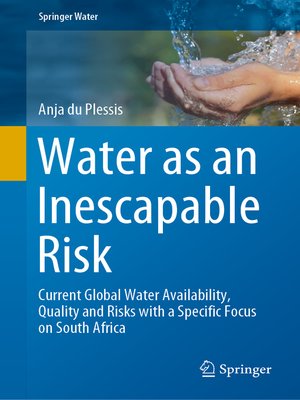Water as an Inescapable Risk
ebook ∣ Current Global Water Availability, Quality and Risks with a Specific Focus on South Africa · Springer Water
By Anja du Plessis

Sign up to save your library
With an OverDrive account, you can save your favorite libraries for at-a-glance information about availability. Find out more about OverDrive accounts.
Find this title in Libby, the library reading app by OverDrive.



Search for a digital library with this title
Title found at these libraries:
| Library Name | Distance |
|---|---|
| Loading... |
The book presents an interdisciplinary systematic evaluation of increasing water stress and scarcity over the globe and specifically South Africa. South Africa is used as the prime example as the country is experiencing similar water challenges in terms of availability and quality as most regions across the globe.
Water availability is predominantly used to illustrate water scarcity however, continued degradation of the world's freshwater resources, by a multitude of natural and anthropogenic factors, have consequently exacerbated water stress and scarcity due to it being of insufficient quality for various uses. The increase of water scarcity through both natural and anthropogenic factors has in turn led to water being viewed as an increasing risk within all spheres. Water as a source of conflict has come to the forefront especially within regions which struggle to meet the increasing demands from different water users and trying to achieve future sustainability of the resource.
The increase of water scarcity and stress as well as the continued pressure of population and economic growth has brought various new challenges into play. This book focuses on water as an increasing risk over the globe and specifically South Africa by reviewing both water availability and quality, evaluating water as a global and national risk. The book concludes by focusing on current limitations, necessary strategic actions as well as possible policy-related changes which may be required to adapt to future water challenges and to lessen water as an increasing risk.







